Morocco, located in North Africa, is a country with diverse landscapes. It has mountains, deserts, and coastlines, each with its unique beauty.
The Atlas Mountains run through the center, bringing rain and supporting wildlife. The Sahara Desert, in the south, is the largest hot desert, known for its stunning sand dunes. Along the Atlantic and Mediterranean coasts, there are bustling cities and beautiful beaches, vital for fishing, shipping, and tourism.
Understanding Morocco’s geography helps us appreciate its natural beauty and cultural richness. Let’s explore the diverse landscapes that make Morocco so special.
Landscapes of Morocco
Morocco is known for its varied landscapes. Each type of land has unique features that make it special. From wide plains to deep valleys, let’s explore the different landscapes in Morocco.
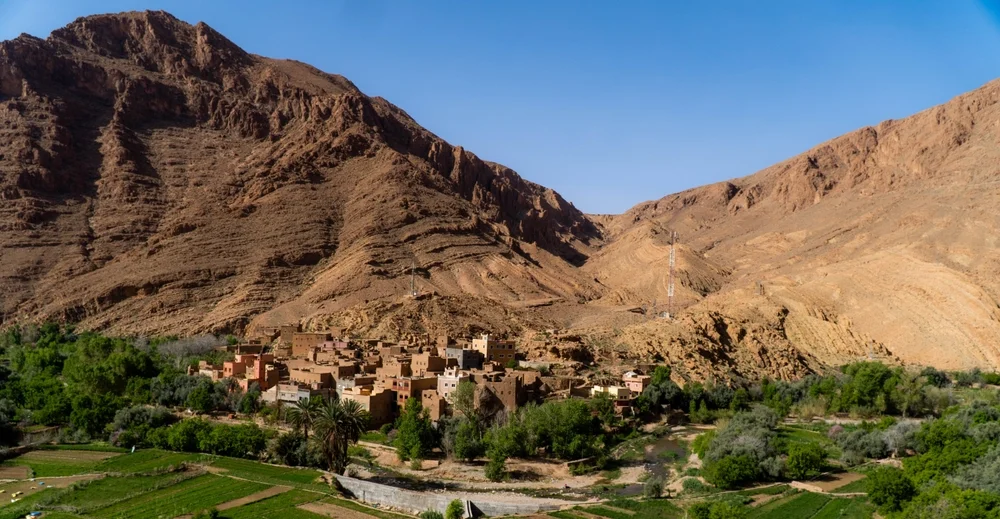
Plains and Plateaus
Morocco has many plains and plateaus. The plains are wide, flat areas of land. One of the most famous plains is the Saiss Plain. It is located near the city of Fez. This plain is very fertile, which means it is good for growing crops. Farmers plant wheat, barley, and olives here.
The plateaus are flat, elevated areas of land. The Central Plateau is an important region. It is higher than the plains and has many small hills. The plateaus are great for grazing animals like sheep and goats.
Valleys and River Basins
Valleys and river basins are also important in Morocco. A valley is a low area between mountains or hills. The Ourika Valley is a popular spot for tourists. It is located in the High Atlas Mountains and is known for its beautiful scenery and waterfalls.
River basins are areas where rivers flow and collect water. The Draa River Basin is one of the largest in Morocco. It provides water for farming and supports many towns and villages. The river helps grow dates, which are an important crop in this area.
Forests and Woodlands
Morocco has several forests and woodlands. The Middle Atlas Mountains are covered with cedar and oak forests. These forests are home to many animals, like monkeys and birds. The forests are important for the environment because they help keep the air clean and provide homes for wildlife.
The Mamora Forest, near Rabat, is one of the largest cork oak forests in the world. It is important for producing cork, which is used for making bottle stoppers and other products.
The Mountains of Morocco
Morocco is famous for its impressive mountains. The mountains play a big role in the country’s climate and culture. Let’s learn about the different mountain ranges in Morocco.
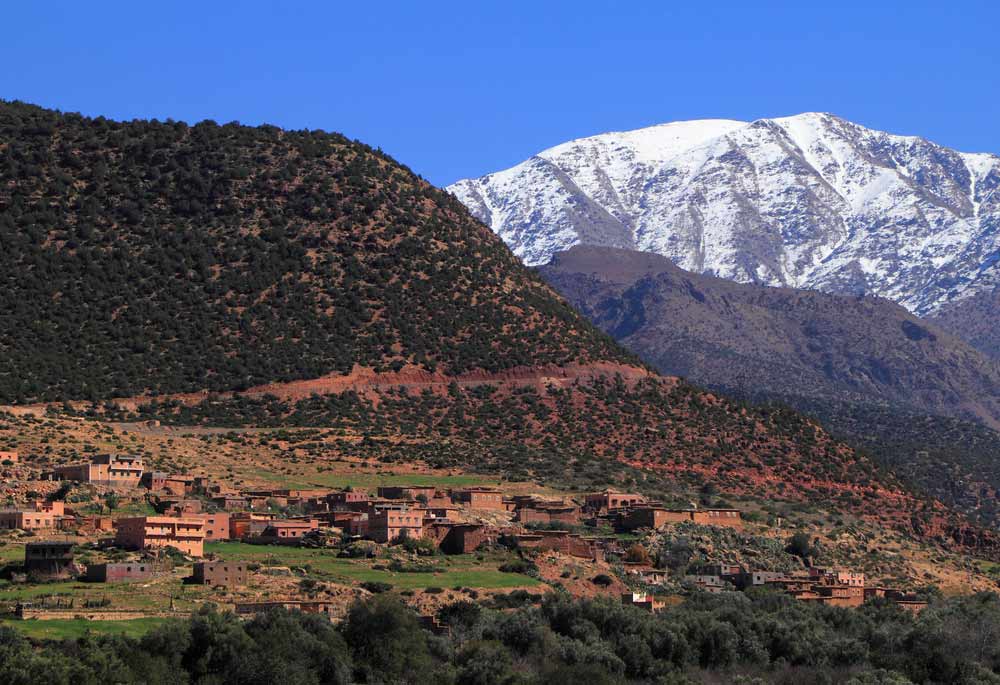
The Atlas Mountains
The Atlas Mountains are the most well-known mountain range in Morocco. They stretch across the country from the southwest to the northeast.
- High Atlas Mountains: These mountains are the tallest in North Africa. Mount Toubkal is the highest peak, standing at 4,167 meters. The High Atlas has many valleys and villages. It is popular for trekking and adventure.
- Middle Atlas Mountains: The Middle Atlas is lower than the High Atlas. It has beautiful cedar forests and lakes. Jbel Bou Naceur is a notable peak here. This area is known for its cool climate and is great for hiking.
- Anti-Atlas Mountains: The Anti-Atlas range is in the south. It has rugged terrain and rocky landscapes. Jbel Sirwa is a famous peak in this range. The Anti-Atlas is less visited but very scenic.
The Rif Mountains
The Rif Mountains are in the north of Morocco. They run along the Mediterranean coast. These mountains are lush and green. Jbel Tidirhine is a notable peak in the Rif. The area is known for its beautiful views and rich biodiversity. The Rif Mountains are important for farming, especially for growing olives and citrus fruits.
Other Important Mountains
Morocco has other significant mountains besides the Atlas and Rif ranges.
- Jbel Saghro: This mountain range is located between the High Atlas and the Sahara Desert. It has dramatic rock formations and is popular for trekking.
- Jbel Sirwa: Found in the Anti-Atlas, it is a volcanic mountain. The area around Jbel Sirwa is known for its traditional Berber villages and terraced fields.
- Jbel Toubkal National Park: This park is centered around Mount Toubkal. It is a protected area with diverse flora and fauna. Many visitors come here to enjoy the natural beauty and outdoor activities.
The mountains of Morocco are not just beautiful; they are also vital for the environment and the people. They provide water, support wildlife, and offer places for recreation.
The Deserts of Morocco
Morocco is home to some of the world’s most stunning deserts. These deserts are dry, but they are also full of life and beauty. Let’s explore the different desert areas in Morocco.
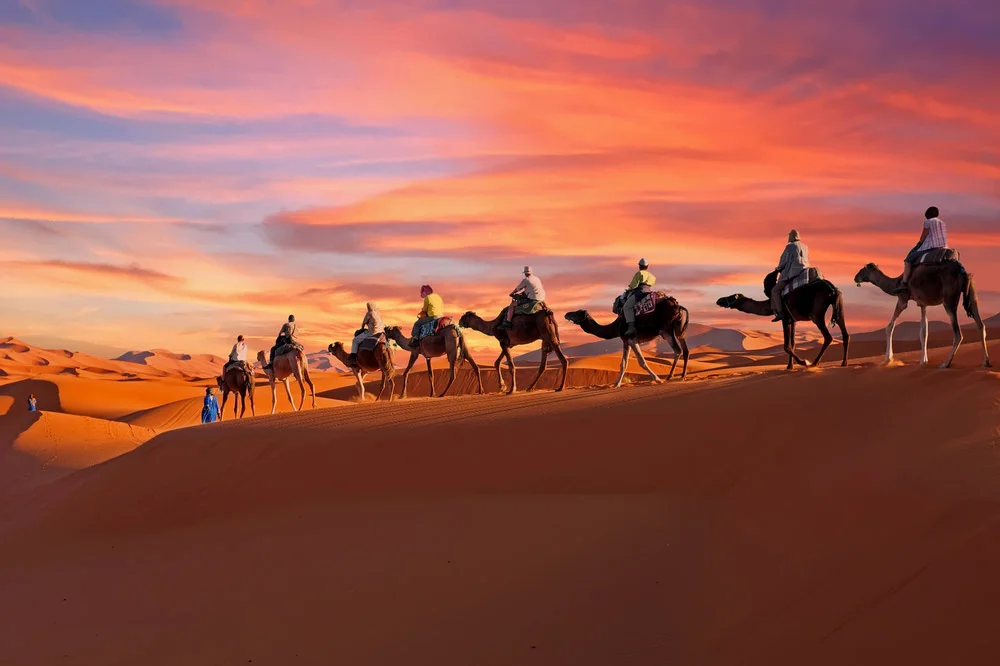
The Sahara Desert
The Sahara Desert is the largest hot desert in the world. It covers a big part of southern Morocco. The Sahara is known for its vast sand dunes. The Erg Chebbi and Erg Chigaga are two famous dune areas. The dunes can reach up to 150 meters high.
The Sahara is not just sand. There are also rocky plateaus and dry valleys. Oases are green spots in the desert where water is found. These oases are very important for people and animals. They provide water and a place to grow crops like dates.
The Erg Chebbi Dunes
The Erg Chebbi dunes are located near the town of Merzouga. These dunes are one of the most visited places in the Sahara. They are perfect for camel rides and camping under the stars. Many tourists come here to see the sunrise and sunset over the dunes. The color of the sand changes with the light, making it a beautiful sight.
The Erg Chigaga Dunes
The Erg Chigaga dunes are more remote than Erg Chebbi. They are near the town of M’Hamid. These dunes are harder to reach, but they offer a more wild and untouched desert experience. The Erg Chigaga dunes are also popular for camel trekking and camping.
The Draa Valley
The Draa Valley is another important desert area. It is known as the “Valley of a Thousand Kasbahs” because of its many old fortresses. The Draa River flows through the valley, making it a green and fertile area in the middle of the desert. The valley is famous for its date palm groves and traditional Berber villages.
Deserts might seem empty, but they are full of life and history. The Sahara and its dunes, along with the Draa Valley, show us how amazing and diverse deserts can be.
Morocco’s Coastal Areas
Morocco has long and beautiful coastlines along the Atlantic Ocean and the Mediterranean Sea. These coasts are important for fishing, tourism, and trade. Let’s explore the coastal areas of Morocco.
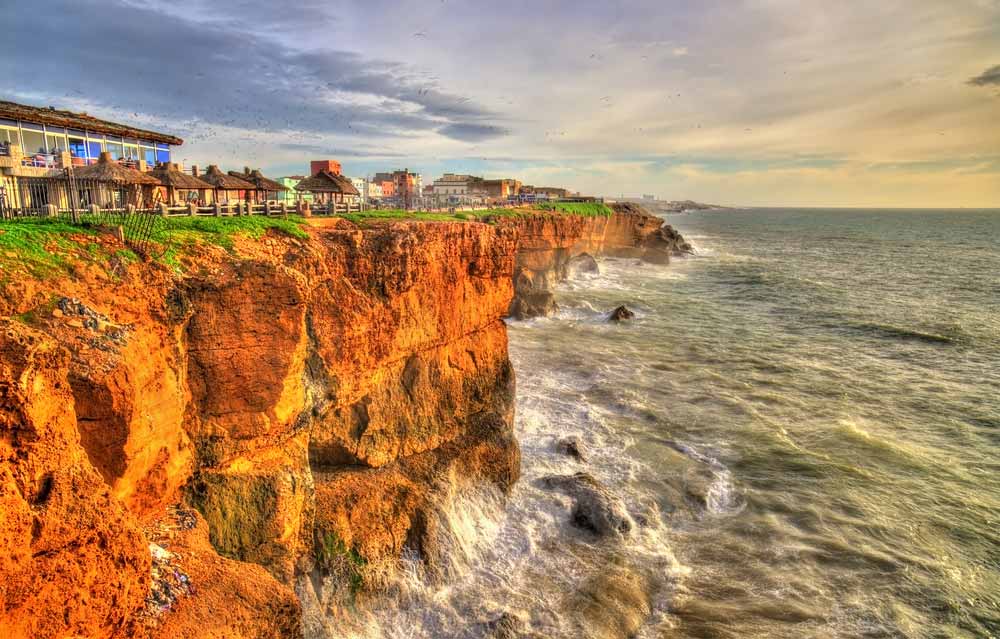
The Atlantic Coastline
The Atlantic coastline is very long. It stretches from the northern city of Tangier to the southern town of Tarfaya.
- Casablanca: Casablanca is the biggest city in Morocco. It has a busy port that is important for trade. The city is also famous for its modern buildings and the Hassan II Mosque, one of the largest mosques in the world.
- Essaouira: Essaouira is a small coastal city. It is known for its old medina, which is a UNESCO World Heritage site. The city has beautiful beaches and is popular for windsurfing and kitesurfing.
- Agadir: Agadir is a city in the south. It has long sandy beaches that attract many tourists. The city is known for its modern buildings and a large fishing port.
The Mediterranean Coastline
The Mediterranean coastline is shorter than the Atlantic coast, but it is also very beautiful. It stretches from Tangier in the west to Saidia in the east.
- Tangier: Tangier is located at the northern tip of Morocco. It is very close to Spain, across the Strait of Gibraltar. The city has a rich history and many cultural influences. Tangier has beautiful beaches and an old medina.
- Al Hoceima: Al Hoceima is a small city on the Mediterranean coast. It is known for its clear blue waters and rocky beaches. The city is a great place for swimming, diving, and fishing.
- Saidia: Saidia is known as the “Blue Pearl” of Morocco. It has long sandy beaches and is a popular tourist destination. The city has many hotels and resorts, making it a great place for a beach vacation.
Other Important Coastal Areas
Morocco has many other important coastal areas besides the major cities.
- Asilah: Asilah is a small town on the Atlantic coast. It is known for its whitewashed buildings and beautiful murals. The town has a relaxed atmosphere and lovely beaches.
- El Jadida: El Jadida is a city on the Atlantic coast. It is famous for its Portuguese architecture and the Cistern of El Jadida. The city has nice beaches and a rich history.
- Martil: Martil is a small town on the Mediterranean coast. It has a beautiful sandy beach and is popular with tourists in the summer. The town is known for its friendly atmosphere and seafood restaurants.
The coastal areas of Morocco are diverse and full of life. From the bustling ports of Casablanca to the peaceful beaches of Saidia, there is something for everyone. The coasts are vital for Morocco’s economy and offer many opportunities for fun and relaxation.
Climatic Influence on Geography
The climate of Morocco is very diverse. It changes from one region to another. The weather affects how people live, work, and play. Let’s learn about the different climates in Morocco.
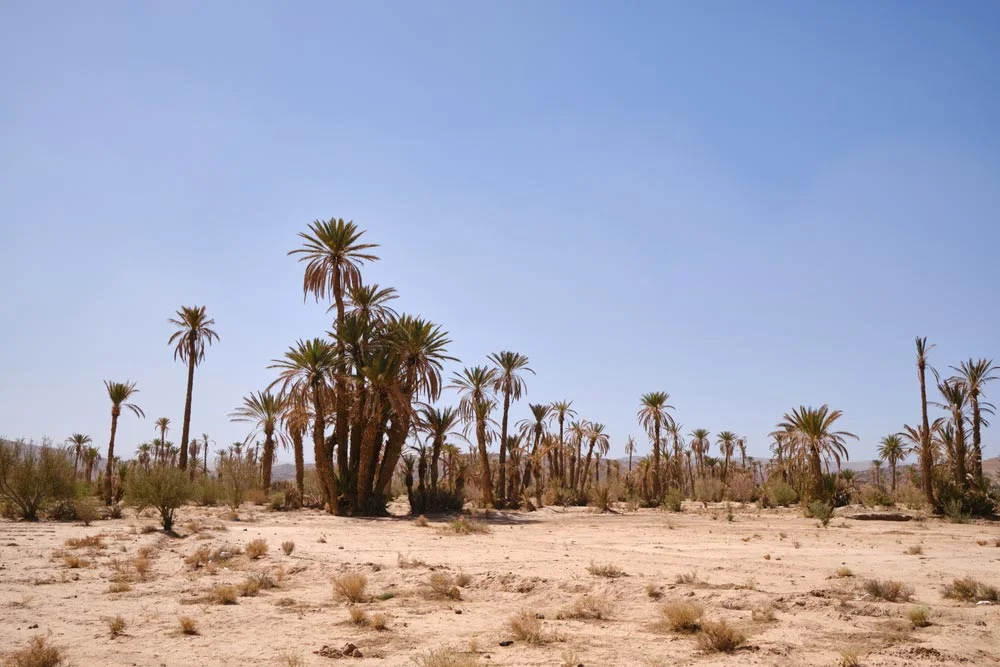
Climatic Zones
Morocco has several climatic zones. Each zone has its own weather patterns.
- Coastal Climate: The coastal areas have a mild climate. Summers are warm but not too hot. Winters are cool and rainy. This climate is great for farming. Farmers grow crops like olives and citrus fruits here.
- Mountain Climate: The mountains have a cooler climate. In the High Atlas Mountains, it can even snow in winter. The cool weather is perfect for forests and wildlife. Many people visit the mountains to hike and enjoy nature.
- Desert Climate: The desert areas are hot and dry. The Sahara Desert is very hot in the day but can be cold at night. Rain is rare in the desert. People in the desert rely on oases for water and farming.
Seasonal Variations
The seasons in Morocco also affect the climate.
- Spring (March to May): Spring is a lovely time in Morocco. Flowers bloom, and the weather is pleasant. It is a great time for outdoor activities and sightseeing.
- Summer (June to August): Summers can be very hot, especially in the desert. Coastal areas stay cooler because of the sea breeze. Many people go to the beach to escape the heat.
- Autumn (September to November): Autumn brings cooler weather. It is harvest time for many crops. The valleys and plains look beautiful with golden fields.
- Winter (December to February): Winters are mild on the coast but cold in the mountains. It is the rainy season in many parts of Morocco. Snow falls in the High Atlas, making it a popular time for skiing.
The climate in Morocco shapes the land and the lives of its people. From the cool mountains to the hot deserts and mild coasts, each region is unique.
Ecological and Environmental Aspects
Morocco’s diverse landscapes support many plants and animals. The environment is important for everyone. Let’s explore the ecological and environmental aspects of Morocco.
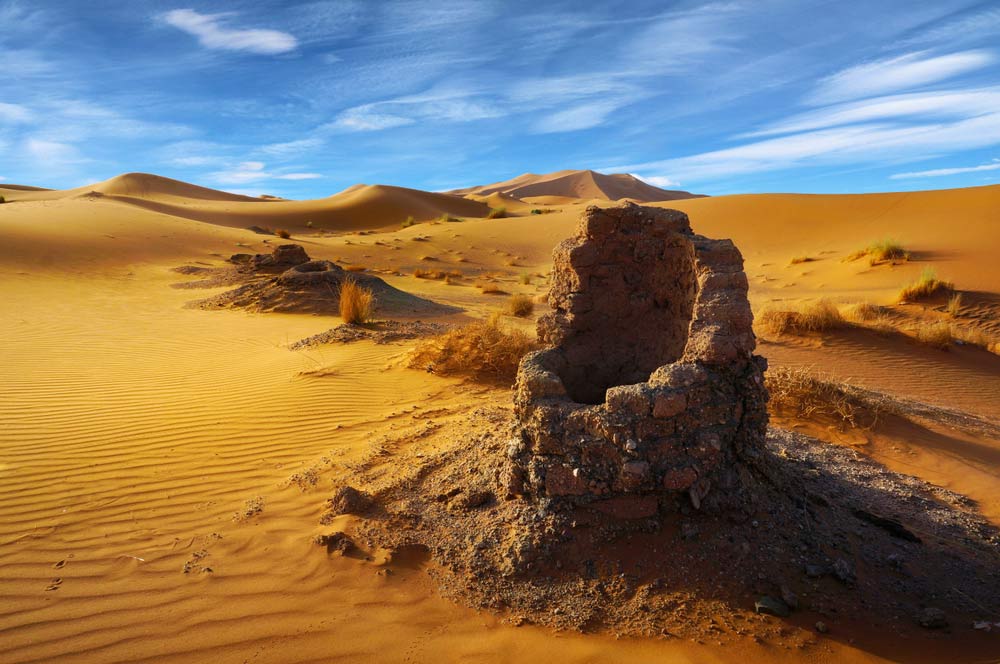
Biodiversity
Morocco is home to a wide variety of plants and animals.
- Flora: The country has many types of plants. In the mountains, you can find cedar, pine, and oak trees. In the deserts, plants like cacti and date palms grow. Coastal areas have olive trees and citrus fruits. Wildflowers bloom in the spring, adding color to the landscape.
- Fauna: Many animals live in Morocco. The Barbary macaque, a type of monkey, lives in the forests. The deserts are home to animals like camels, foxes, and lizards. In the mountains, you might see eagles and other birds. Coastal waters have fish, dolphins, and sometimes whales.
Conservation Efforts
Protecting the environment is very important in Morocco.
- National Parks: Morocco has several national parks. These parks protect wildlife and natural habitats. Toubkal National Park is one of the most famous. It is home to many plants and animals. The park also attracts many visitors.
- Forestry Projects: Reforestation projects help restore forests. Planting new trees helps the environment. Trees provide homes for animals and help keep the air clean.
- Water Conservation: Saving water is vital in dry areas. Techniques like drip irrigation help farmers use less water. Oases are protected to ensure they keep providing water and life.
Environmental Challenges
Morocco faces several environmental challenges.
- Desertification: Desertification is the spread of deserts. It happens when land becomes dry and unusable. Planting trees and using better farming methods can help stop desertification.
- Pollution: Pollution is a problem in cities and industrial areas. Factories and cars produce smoke and waste. Cleaning up pollution is important for health and the environment.
- Climate Change: Climate change affects weather patterns. It can cause more droughts or heavy rains. Protecting the environment can help fight climate change.
Human Impact on Geography
Humans have a big impact on Morocco’s geography. Cities, farms, and industries change the land. Let’s learn how people affect Morocco’s environment.
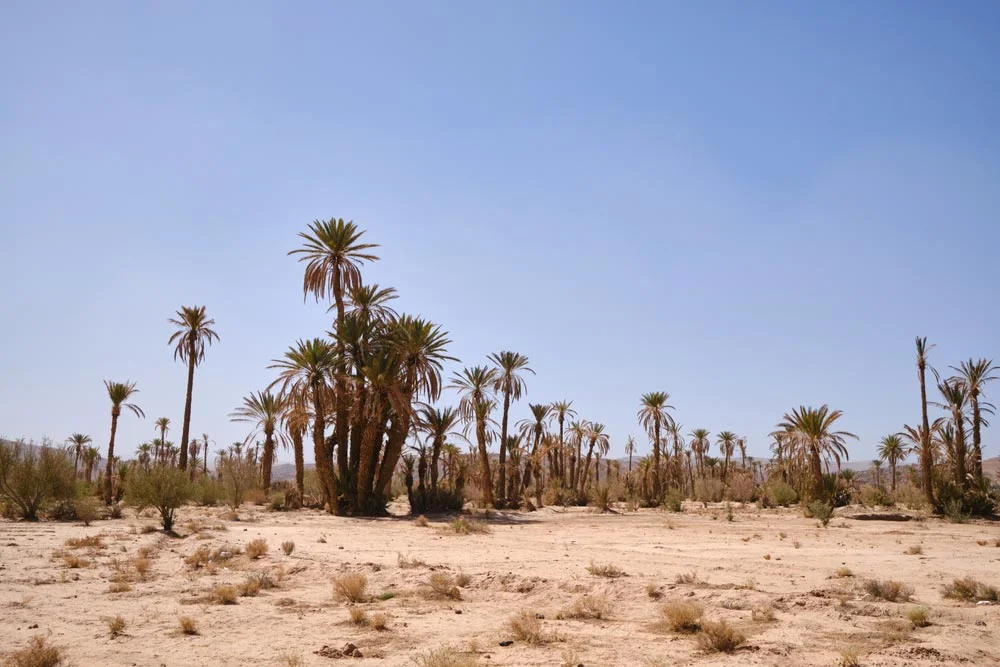
Urbanization
Urbanization means the growth of cities. Many people move to cities for jobs and better lives.
- Major Cities: Cities like Casablanca, Rabat, and Marrakech are growing fast. They have many buildings, roads, and businesses. This growth changes the land. Parks and green spaces are important to keep cities healthy.
- Infrastructure: Building roads and bridges helps connect places. It makes travel easier. But it can also harm natural areas. Planning carefully can help protect the environment.
Agriculture and Farming
Farming is very important in Morocco. It helps feed people and supports the economy.
- Crops: Farmers grow wheat, barley, and vegetables. They also grow olives, citrus fruits, and dates. Farming needs water, so irrigation is used to water crops.
- Livestock: Animals like sheep, goats, and cows are raised for meat, milk, and wool. Grazing animals need land and water. Good farming practices help keep the land healthy.
Industry and Mining
Industry and mining also change the land. They provide jobs and resources.
- Factories: Factories make goods like clothes, cars, and electronics. They can cause pollution if not managed well. Using clean technologies can help reduce pollution.
- Mining: Morocco has many minerals like phosphate, lead, and zinc. Mining provides materials for many products. It can also damage the land. Reclaiming mined land helps restore it.
Tourism
Tourism is a big part of Morocco’s economy. Many people visit to see the mountains, deserts, and coasts.
- Tourist Attractions: Places like Marrakech, the Sahara Desert, and coastal cities attract many visitors. Tourism creates jobs and supports businesses.
- Sustainable Tourism: It is important to protect natural and cultural sites. Sustainable tourism means visiting places without harming them. This helps keep Morocco beautiful for future visitors.
Human activities shape Morocco’s geography. Cities, farms, industries, and tourism all play a role.
Travel and Tourism Insights
Morocco is a wonderful place to visit. It has many interesting places to see and things to do. Let’s explore the travel and tourism highlights of Morocco.
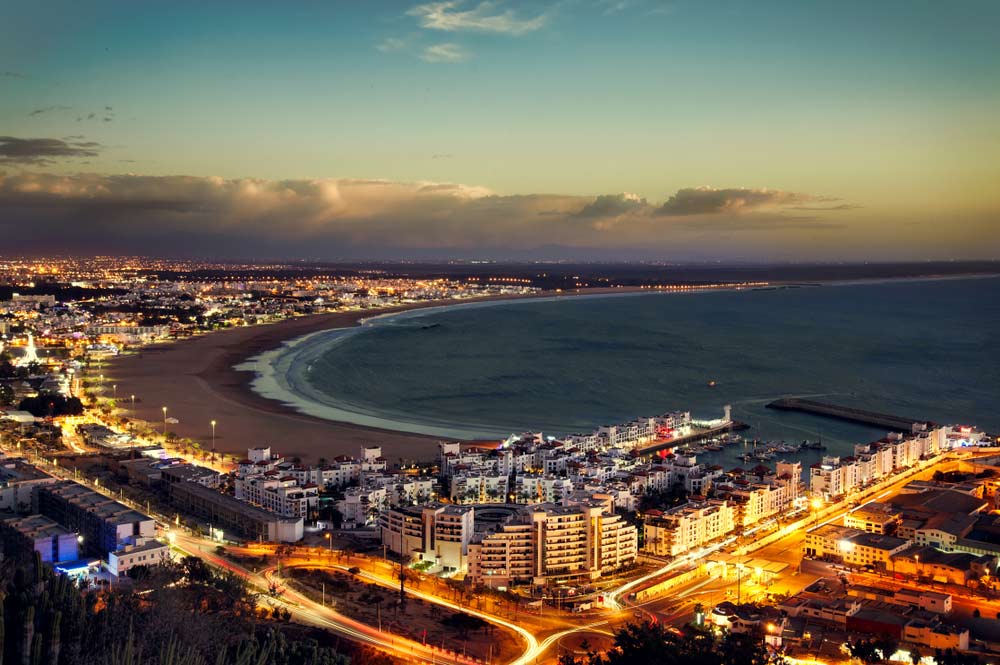
Popular Tourist Destinations
Morocco has many famous tourist spots. Each place is unique and exciting.
- Marrakech: Marrakech is known for its vibrant markets and historic palaces. The Jemaa el-Fnaa square is full of performers, food stalls, and shops. The Majorelle Garden is a peaceful spot with beautiful plants and fountains.
- Fez: Fez is home to the oldest university in the world, Al Quaraouiyine. The medina of Fez is a maze of narrow streets filled with shops, mosques, and historic buildings. The tanneries, where leather is made, are also a popular sight.
- Chefchaouen: This city is famous for its blue-painted buildings. It is located in the Rif Mountains and offers stunning views. The blue streets and alleys are perfect for taking photos.
Adventure and Exploration
Morocco is great for adventure lovers. There are many outdoor activities to enjoy.
- Hiking and Trekking: The Atlas Mountains are perfect for hiking. Mount Toubkal is a popular trekking destination. Hikers can see beautiful landscapes and meet local Berber people.
- Desert Tours: The Sahara Desert offers amazing experiences. Visitors can ride camels, camp under the stars, and explore sand dunes. Erg Chebbi and Erg Chigaga are famous dune areas.
- Beach Activities: Morocco’s coasts are great for water sports. Surfing is popular in places like Taghazout. Essaouira is known for windsurfing and kitesurfing.
Cultural Experiences
Morocco’s rich culture is a big attraction for visitors.
- Festivals: Morocco has many festivals. The Fez Festival of World Sacred Music celebrates music from around the world. The Marrakech International Film Festival attracts movie stars and film lovers.
- Cuisine: Moroccan food is delicious. Visitors can try tagine, couscous, and pastilla. Street food like kebabs and mint tea is also popular.
- Crafts and Souvenirs: Morocco is famous for its handmade crafts. Markets sell pottery, rugs, and jewelry. Visitors can buy these items as souvenirs.
Traveling in Morocco offers something for everyone. From exploring historic cities to hiking in the mountains and experiencing the desert, there is always something new to discover.
Conclusion
Morocco’s geography is incredibly diverse, with towering mountains, vast deserts, and beautiful coasts. The Atlas and Rif Mountains offer stunning views and adventure, while the Sahara Desert amazes with its vast dunes. The Atlantic and Mediterranean coasts provide vibrant beach towns and bustling ports. Understanding these will help us appreciate the unique beauty and cultural richness of Morocco.
